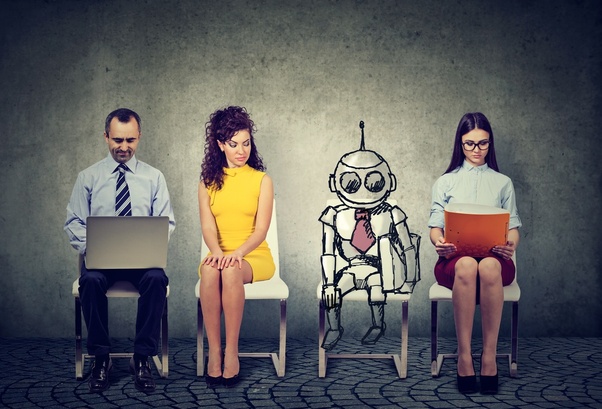How Jobs Will Look

The U.S. is in the middle of a digital transformation. Artificial intelligence and technology breakthroughs are changing our world—for better or worse.
In this fast-paced landscape, some businesses will thrive, and some will fail.
One of the most eye-opening conversations I’ve had on this subject was with billionaire entrepreneur Tom Siebel. In 2006, Tom sold his company, Siebel Systems, to Oracle for just under $6 billion. Today, he’s the founder and CEO of C3.ai, a new software platform focused on digital transformation.
He recently joined me on my Follow Your Different podcast to talk about his book, Digital Transformation, and why it’s more critical than ever before for CEOs and senior leaders to have a detailed understanding of new technology.
Here’s what I learned from Tom about surviving a digital transformation:
Corporate culture should empower employees to grow alongside a digital transformation.
Part of what makes C3.ai – Enterprise AI so successful is its ability to attract and retain high-performing employees.
Tom attributes much of this success to his company’s focus on continuing education. At C3.ai – Enterprise AI, the corporate culture reinforces the belief that learning is essential to staying relevant in the fast-paced world of AI.
Employees are encouraged to complete a specialty continuing education curriculum in Coursera that focuses on industrial AI technology. When they do, each is given a bonus that varies between $1,500 and $2,500. To date, Tom estimates he’s doled out $1 million in employee payouts.
The real bonus: employees that are better equipped to perform their job, serve customers, and apply their skills to advance their careers.
For Tom, survival comes down to one important principle: “In order to stay on top, you need to be continuously evolving.”
Every company needs to adapt to new tech or face extinction.
Tom sees our digital transformation as the business-world equivalent of evolutionary biology. Fundamentally, it’s the idea that enterprising businesses must find ways to adapt to the storm of new technology in order to survive.
Research shows that since 2000, 52 percent of companies in the Fortune 500 have either gone bankrupt, been acquired, or ceased to exist as a result of disruptive technologies. Today, the collision of the physical and digital worlds has affected every aspect of our society.
Take Amazon. It’s AI-based platform—an elastic cloud business model—has made it a retailing superpower. Last year, more than 8,000 outlets closed in the U.S. as consumers moved to the digital marketplace.
Tom told me that most retail outlets will eventually be replaced by Amazon.
“This is the business equivalent of a meteor hitting the Yucatan and knocking out 86% of the world’s dinosaur population.”
Moving forward, it’s important that both companies and individuals learn to adapt. Some will use technological evolution to thrive in the new economy and survive. Those who stay the same will find themselves becoming increasingly irrelevant—and soon, extinct.
Governments and the private sector need to work together to keep citizens safe.
Some will argue the Industrial Revolution was a positive moment in our nation’s history. It increased the production of food and goods. It provided safer, warmer living conditions. It expanded transportation.
At the same time, there were also significant deleterious events that came out of the Industrial Revolution. We can draw a line between the invention of the steam engine to Marxism, child labor, World War I, and World War II.
Now, consider the post-digital transformation era. Tom sees the same outcome with IoT devices, the computer systems we use to control everything from the flow of capital and transportation to our energy and power grids.
“Together, they dramatically increase the surface area available for cyberattacks,” he told me.
Countries like Russia, Iran, and China are currently investing billions of dollars in AI. Armed with that power, they’re capable of weaponizing those systems in an act of technological warfare. Consider what would happen if one of them shut down a U.S. cities power grid. Millions would lose access to things like food, water, and public safety. It would be like Mad Max meets Peoria.
It’s fucking bullshit that companies like Google won’t sell technology to the government, and instead do business with China. Tom points out that allowing AI to be used for ethically questionable activities is an important consideration business leaders need to be aware of, especially as it relates to our nation’s safety and privacy.
That’s why, at C3.ai – Enterprise AI, Tom is working to bring AI to our commercial and industrial defense and intelligence systems. His hope is that by helping the U.S. government harness this technology, we’ll be better prepared to meet the technological issues of the future.
“To arm ourselves, we need to look at the digital transformation not just as an entrepreneurial opportunity,” he adds, “but also a way to keep us safe while protecting our civil liberties.”
That’s one step in the right direction. The most critical step, however, is the one we all need to take: arming ourselves with the knowledge to survive the digital transformation.
Today, every top-level CEO needs to be technologically savvy. Moving forward, businesses will differentiate themselves by using technology to create new strategies with the disruptive power to wipe out entire markets—or even opposing nations.
As new and emerging technological advancements become a fundamental part of business language, leaders and managers need to be able to leverage these new platforms to gain a competitive advantage, both at home and in the IT war abroad. “Those that don’t develop a working knowledge of new technology will not only become ineffective,” says Tom, “they also won’t be able to function in tomorrow’s business landscape.”
We all have a choice: we can learn the technical language of today and use it to succeed at our jobs while better serving our companies, employees, shareholders, and customers. If we don’t, we’ll become more than obsolete. We’ll become extinct.
To listen to the full podcast click here to Follow Your Different

